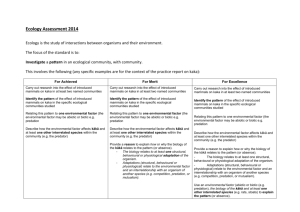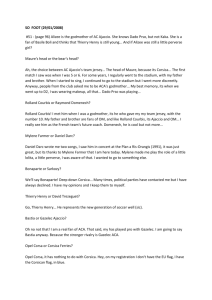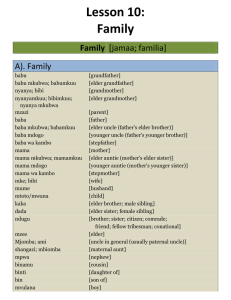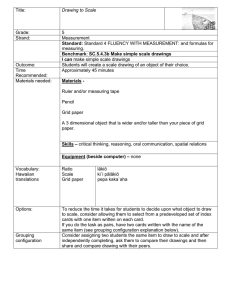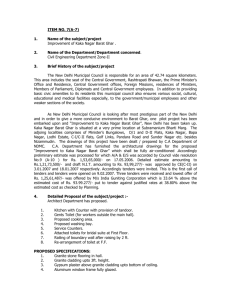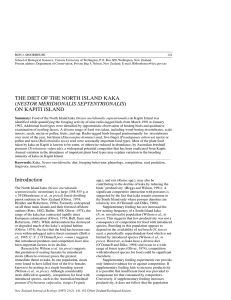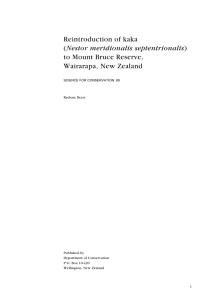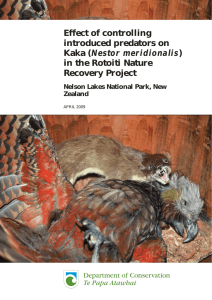North Island Kaka
advertisement
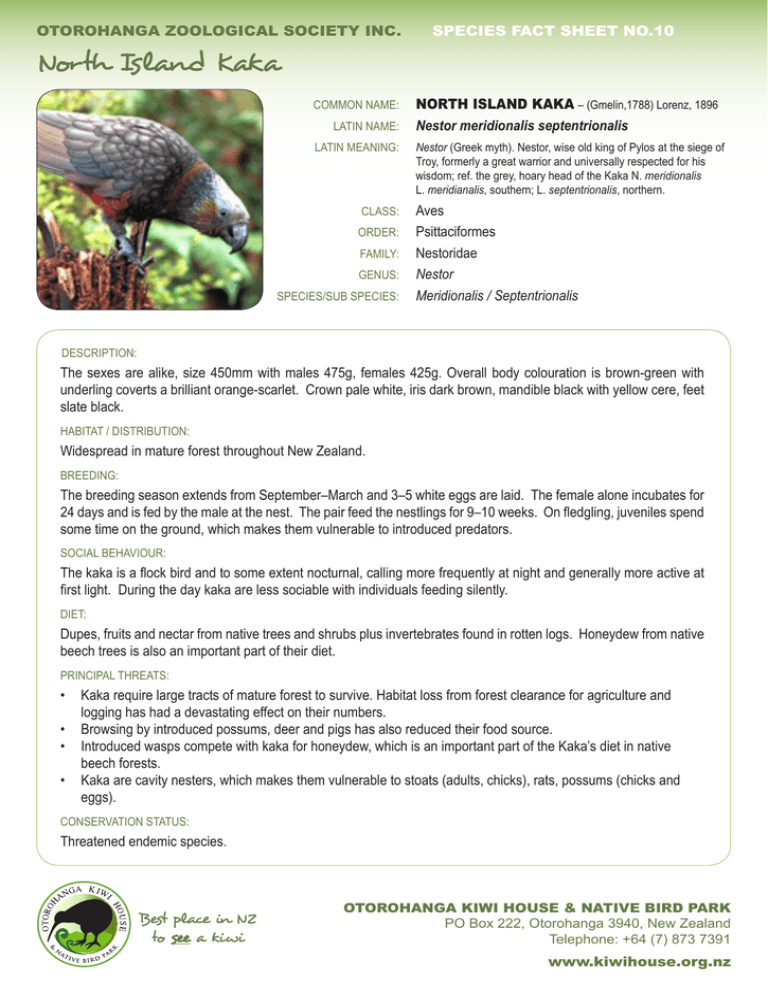
OTOROHANGA ZOOLOGICAL SOCIETY INC. SPECIES FACT SHEET NO.10 North Island Kaka COMMON NAME: Troy, formerly a great warrior and universally respected for his wisdom; ref. the grey, hoary head of the Kaka N. meridionalis L. meridianalis, southern; L. septentrionalis, northern. CLASS: Aves Psittaciformes Nestoridae Nestor Meridionalis / Septentrionalis NORTH ISLAND KAKA – (Gmelin,1788) Lorenz, 1896 LATIN NAME: Nestor meridionalis septentrionalis LATIN MEANING: Nestor (Greek myth). Nestor, wise old king of Pylos at the siege of ORDER: FAMILY: GENUS: SPECIES/SUB SPECIES: DESCRIPTION: The sexes are alike, size 450mm with males 475g, females 425g. Overall body colouration is brown-green with underling coverts a brilliant orange-scarlet. Crown pale white, iris dark brown, mandible black with yellow cere, feet slate black. HABITAT / DISTRIBUTION: Widespread in mature forest throughout New Zealand. BREEDING: The breeding season extends from September–March and 3–5 white eggs are laid. The female alone incubates for 24 days and is fed by the male at the nest. The pair feed the nestlings for 9–10 weeks. On fledgling, juveniles spend some time on the ground, which makes them vulnerable to introduced predators. SOCIAL BEHAVIOUR: The kaka is a flock bird and to some extent nocturnal, calling more frequently at night and generally more active at first light. During the day kaka are less sociable with individuals feeding silently. DIET: Dupes, fruits and nectar from native trees and shrubs plus invertebrates found in rotten logs. Honeydew from native beech trees is also an important part of their diet. PRINCIPAL THREATS: • • • • Kaka require large tracts of mature forest to survive. Habitat loss from forest clearance for agriculture and logging has had a devastating effect on their numbers. Browsing by introduced possums, deer and pigs has also reduced their food source. Introduced wasps compete with kaka for honeydew, which is an important part of the Kaka’s diet in native beech forests. Kaka are cavity nesters, which makes them vulnerable to stoats (adults, chicks), rats, possums (chicks and eggs). CONSERVATION STATUS: Threatened endemic species. Best place in NZ to see a kiwi OTOROHANGA KIWI HOUSE & NATIVE BIRD PARK PO Box 222, Otorohanga 3940, New Zealand Telephone: +64 (7) 873 7391 www.kiwihouse.org.nz

